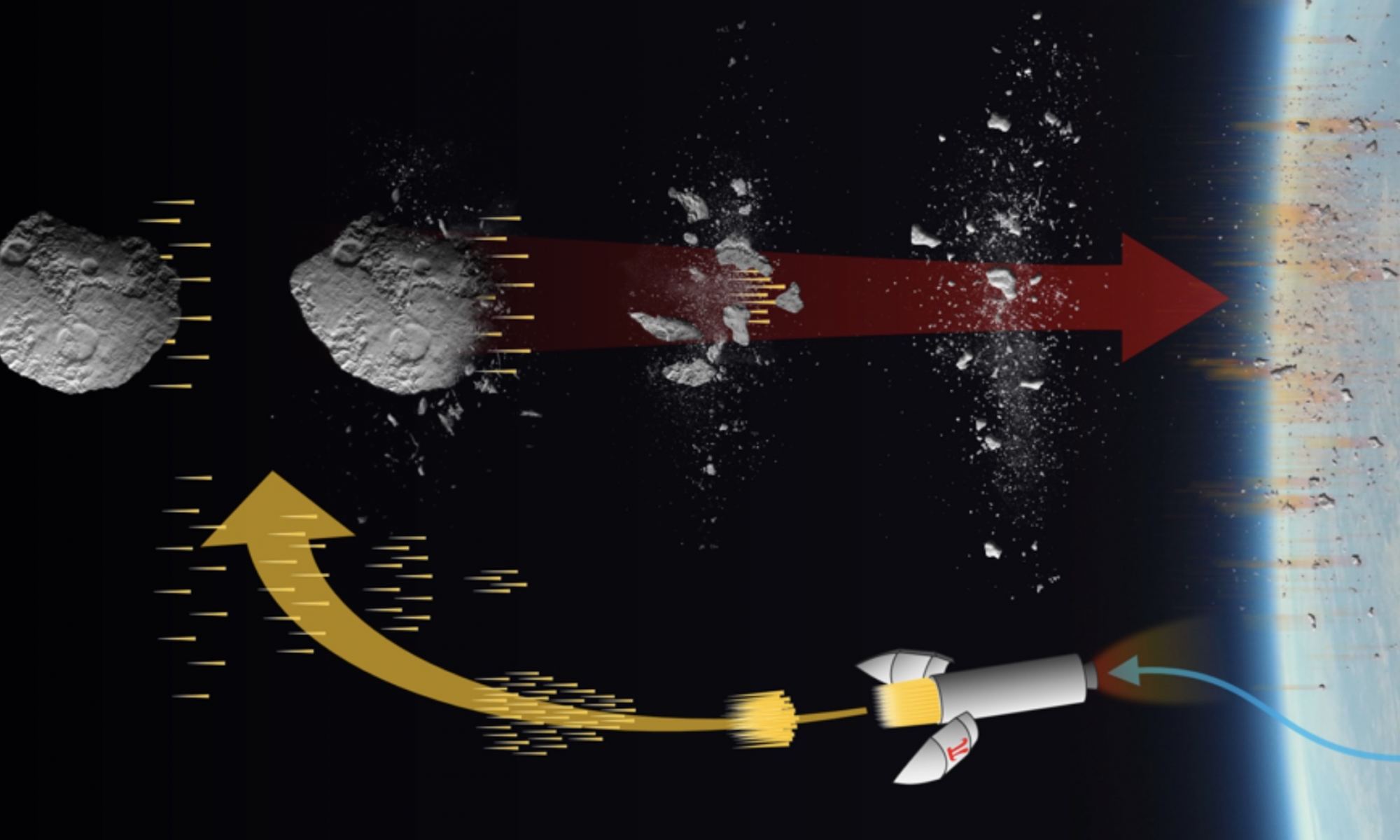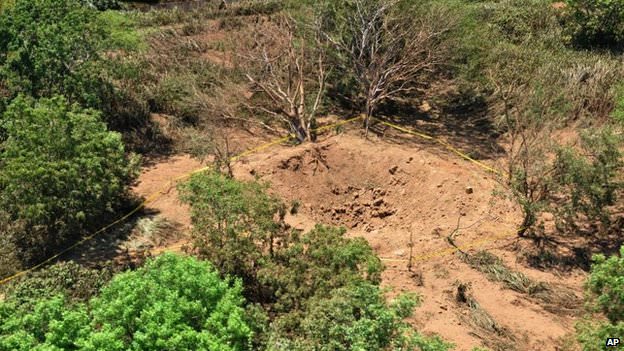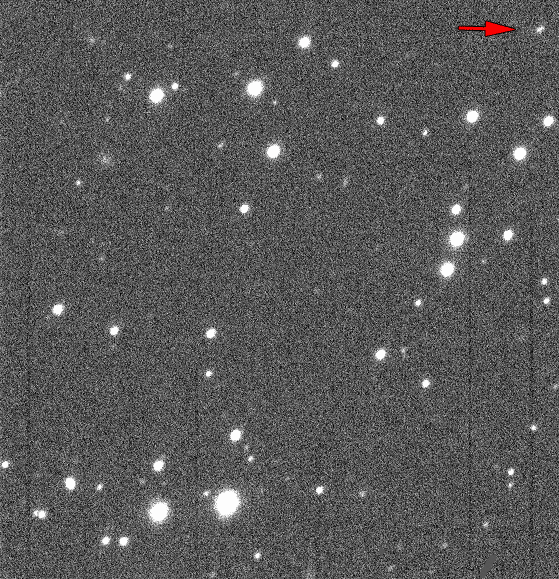In July of this year, an asteroid roughly 30 to 60 meters across passed Earth to within one-quarter of the distance to the Moon. It posed no threat to our world, but if it had struck Earth it would have created a blast three times greater than the 2013 Chelyabinsk impact. And we only noticed it two days after it passed. It’s a good example of how sizable asteroids still miss detection. Not ones large enough to threaten our extinction, but large enough to threaten millions of lives. If a similar asteroid was detected just days before impact, could we stop it? That’s the question raised by a recent study in the arXiv.
Continue reading “An Asteroid Came Uncomfortably Close to Earth in July. Could we Have Stopped it?”Asteroid 2006 QV89 Now Has a 0% Chance of Hitting Earth in September
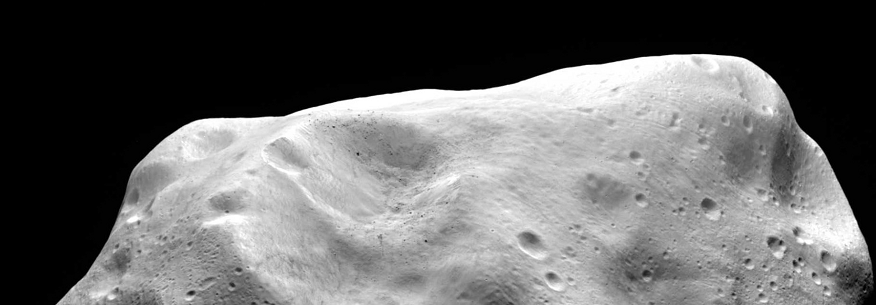
Why report on an asteroid that has no chance of hitting Earth? Because this asteroid, known as 2006 QV89, has a history. A history of being kind of hard to track.
Continue reading “Asteroid 2006 QV89 Now Has a 0% Chance of Hitting Earth in September”The Nicaragua Crater: The Result of a Meteorite Impact or Not?
By now, you’ve seen the pictures.
As astronomers tracked the close pass of Near Earth Asteroid 2014 RC this weekend, reports came out of Nicaragua that a possible meteorite struck near the capital of Managua.
Details are still sketchy, but government sources cite reports of a loud bang and ground tremor late Saturday night on September 6th. Later images circulating late Sunday evening showed a crater 12 metres wide and 5.5 metres deep on a remote section of the international airport at Managua, which also hosts a local air force installation.
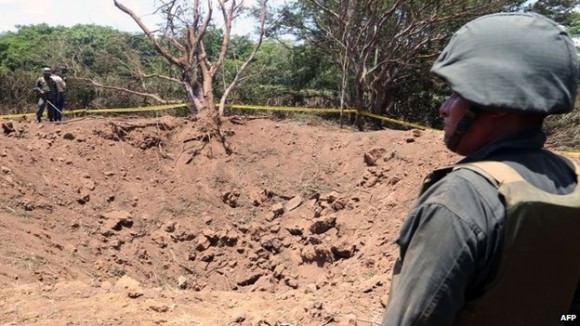
Reports state that the impact went off “like a bomb,” and Wilfried Strauch of the Nicaragua Institute of Earth Studies has already gone on record as being “convinced it was a meteorite.” Investigators are currently scouring the alleged impact site for debris.
This has also sparked a lively discussion across forums and social media: is the crater the result of an extraterrestrial impactor?
Of course, cosmic coincidences can and do happen. Last year, the close passage of asteroid 2012 DA14 was upstaged by the explosion of a 20-metre asteroid over the city of Chelyabinsk on the very same day. And though the two were conclusively proven to be unrelated, they did serve to raise general human awareness that, yes, large threatening rocks do indeed menace the Earth. And ironically, the aforementioned asteroid 2014 RC was about the same size as the Chelyabinsk asteroid, which snuck up on the Earth undetected from a sunward direction.
But Ron Baalke, a software engineer at the Jet Propulsion Laboratory has posted an update to the close pass by asteroid 2014 RC on the NASA’s Near Earth Object website, saying, “Since the explosion in Nicaragua occurred a full 13 hours before the close passage of asteroid 2014 RC, these two events are unrelated.”
Baalke also noted that “no eyewitness accounts or imagery have come to light of the fireball flash or debris trail that is typically associated with a meteor of the size required to produce such a crater.”

There are a few other problems with the Managua crater, though of course, we’d love to be proven wrong. Many observers have noted that the crater does not appear to look fresh, and the trees and soil around it appear to be relatively undisturbed. A first visual impression of the site looks more like a ground slump or sinkhole than an impact, or perhaps an excavation. Others have also noted the similarity of the crater with a military blast, a very good possibility with an air force base nearby.
Meteorite Men’s own Geoff Notkin has voiced doubts as to the authenticity of the meteor crater on Twitter.
Of course, it’s possible (though unlikely) that the impactor struck the site from straight overhead, leaving the area around it undisturbed. As with meteor showers, an impactor striking the Earth before local midnight would be coming at the planet from behind at a lower combined velocity.
Color me skeptical on this one. Still, we’ve been wrong before, and it’s always a boon for science when a new meteorite fall turns out to be real. Many have already cited the similarities between the Managua crater and the Carancas event in 2007 in Peru near Lake Titicaca that was initially considered dubious as well.
But again, it’s highly improbable that the Managua event is related to 2014 RC, however, which made its closest pass over the southern hemisphere near New Zealand many hours later at 18:18 UT on Sept 7th. We ran a recent simulation of the pass in Starry Night from the vantage point of the asteroid, and you’ll note that Central America is well out of view:
It’s also curious that no still images or video of the Managua event have yet to surface. This is strange, as it occurred on a Saturday night near a capital city of 2.4 million. The weather over Managua was partly cloudy that night, and generally, a security camera or two usually catches sight of the fireball.
We also did a check through any upcoming space junk reentries, which also proved to be a poor fit for a potential suspect. The next slated reentry is a BREEZE-M Tank with the NORAD ID of 2011-074D associated with the 2011 launch of AMOS-5. This object was not overhead around the time of the Managua event, and is predicted to reenter on September 9th at 15:15 UT +/- 14 hours.
And the same goes for the launch of AsiaSat-6 by SpaceX on Saturday night, as launches from the Cape head out eastward across the Atlantic and away from the Gulf of Mexico region.
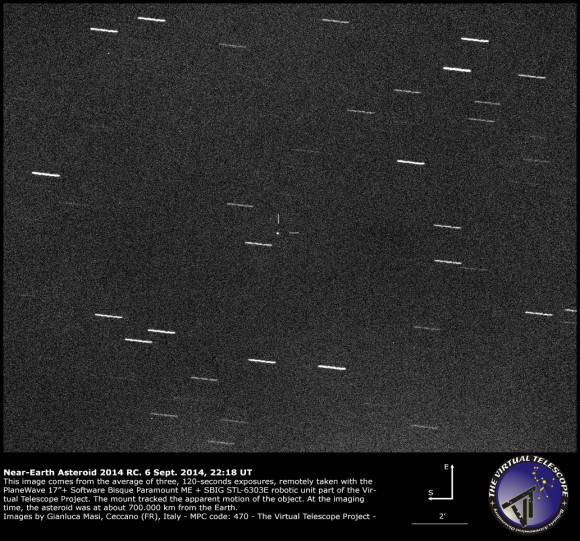
Unfortunately, images and video would go a long way towards gauging a direction and final orbit of a suspect meteorite. The discovery of meteoritic debris at the site would also serve to clinch the link between the crater and a cosmic impactor as well. Or perhaps, news of the impending passage of NEO asteroid 2014 RC and the recent pass of 2014 RA the weekend prior had already primed the general public to suspect a meteor strike as an explosion was heard late in the evening… we’ve lived near bombing ranges, and are familiar with the sound of late night explosions ourselves.
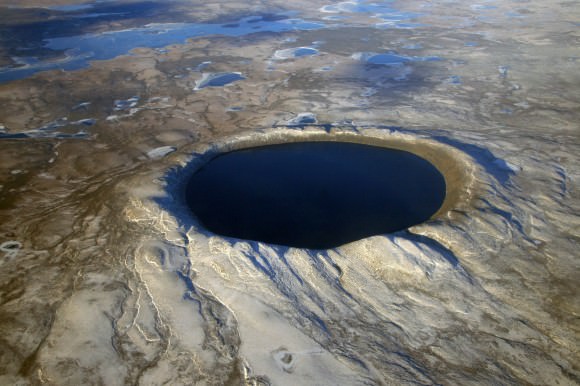
To be sure, the universe is a dangerous place, and errant rocks from above do on occasion have it out for any unwary species that gets in their way.
So we’ll open it up for discussion: what do you think happened on Saturday night near Managua? Was it a meteorite, or another case of a “meteor-wrong?”
We’ve Found 10,000 Near-Earth Objects. How To Step Up The Search?
That pale white dot up there? No. 10,000 in a list of near-Earth objects. This rock, 2013 MZ5, was discovered June 18. It is 1,000 feet (300 meters) across and will not come anywhere near to threatening Earth, NASA assures us.
But what else is out there? The agency still hasn’t found every asteroid or comet that could come by Earth. To be sure, however, it’s really trying. But is there more NASA and other agencies can do to search? Tell us in the comments.
A bit of history: the first of these objects was discovered in 1898, but in recent decades we’ve been more systematic about finding them. This means we’ve been picking up the pace on discoveries.
Congress asked NASA in 2005 to find and catalog 90 per cent of NEOs that are larger than 500 feet (140 meters) in size, about enough to level a city. The agency says it has also found most of the very largest NEOs, those that are at least six-tenths of a mile (1 kilometer) across (and none so far discovered are a threat.)
That’s not to say smaller pieces wouldn’t do damage. Remember that Russian meteor this year that blew out windows and caused injuries? It probably was only 50 feet (15 meters) across.
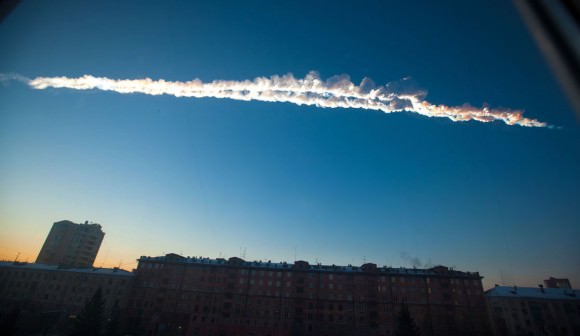
Still, NASA says once it achieves its latest goal (which it is supposed to be by 2020), “the risk of an unwarned future Earth impact will be reduced to a level of only one per cent when compared to pre-survey risk levels. This reduces the risk to human populations, because once an NEO threat is known well in advance, the object could be deflected with current space technologies.”
The major surveys for NEOs in the United States are the University of Arizona’s Catalina Sky Survey, the University of Hawaii’s Pan-STARRS survey and the Lincoln Near-Earth Asteroid Research (LINEAR) survey between the Massachusetts Institute of Technology, the Air Force and NASA. Worldwide, the current discovery rate is 1,000 per year.
In May, the European Space Agency also opened a new “NEO Coordination Centre” intended to be the one-stop shop for asteroid warnings in Europe (and worldwide, of course.) More details here.
EDIT: And NASA also recently issued an Asteroid Grand Challenge to private industry to seek solutions to find these space rocks. Check out more information here.
What more can be done to find and track threatening space rocks? Let us know below.
Credit: NASA

